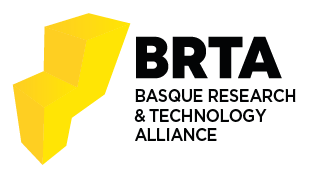Upper Limb Posture Estimation in Robotic and Virtual Reality-based Rehabilitation
Authors: Camilo Cortés Aitor Ardanza, Francisco Molina-Rueda, Alicia Cuesta-Gómez, Luis Unzueta, Gorka Epelde, Oscar E. Ruiz, Alessandro De Mauro, Julian Florez
Date: 08.07.2014
BioMed Research International
Abstract
New motor rehabilitation therapies include virtual reality (VR) and robotic technologies. In limb rehabilitation, limb posture is required to (1) provide a limb realistic representation in VR games and (2) assess the patient improvement. When exoskeleton devices are used in the therapy, the measurements of their joint angles cannot be directly used to represent the posture of the patient limb, since the human and exoskeleton kinematic models differ. In response to this shortcoming, we propose a method to estimate the posture of the human limb attached to the exoskeleton. We use the exoskeleton joint angles measurements and the constraints of the exoskeleton on the limb to estimate the human limb joints angles. This paper presents (a) the mathematical formulation and solution to the problem, (b) the implementation of the proposed solution on a commercial exoskeleton system for the upper limb rehabilitation, (c) its integration into a rehabilitation VR game platform, and (d) the quantitative assessment of the method during elbow and wrist analytic training. Results show that this method properly estimates the limb posture to (i) animate avatars that represent the patient in VR games and (ii) obtain kinematic data for the patient assessment during elbow and wrist analytic rehabilitation.
BIB_text
author = {Camilo Cortés Aitor Ardanza, Francisco Molina-Rueda, Alicia Cuesta-Gómez, Luis Unzueta, Gorka Epelde, Oscar E. Ruiz, Alessandro De Mauro, Julian Florez},
title = {Upper Limb Posture Estimation in Robotic and Virtual Reality-based Rehabilitation},
journal = {BioMed Research International},
pages = {1-18},
volume = {2014},
keywds = {
limb posture estimation, virtual reality, upper limb rehabilitation, robotic-assisted therapy, stroke
}
abstract = {
New motor rehabilitation therapies include virtual reality (VR) and robotic technologies. In limb rehabilitation, limb posture is required to (1) provide a limb realistic representation in VR games and (2) assess the patient improvement. When exoskeleton devices are used in the therapy, the measurements of their joint angles cannot be directly used to represent the posture of the patient limb, since the human and exoskeleton kinematic models differ. In response to this shortcoming, we propose a method to estimate the posture of the human limb attached to the exoskeleton. We use the exoskeleton joint angles measurements and the constraints of the exoskeleton on the limb to estimate the human limb joints angles. This paper presents (a) the mathematical formulation and solution to the problem, (b) the implementation of the proposed solution on a commercial exoskeleton system for the upper limb rehabilitation, (c) its integration into a rehabilitation VR game platform, and (d) the quantitative assessment of the method during elbow and wrist analytic training. Results show that this method properly estimates the limb posture to (i) animate avatars that represent the patient in VR games and (ii) obtain kinematic data for the patient assessment during elbow and wrist analytic rehabilitation.
}
isi = {1},
date = {2014-07-08},
year = {2014},
}







